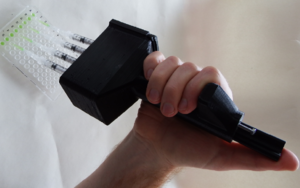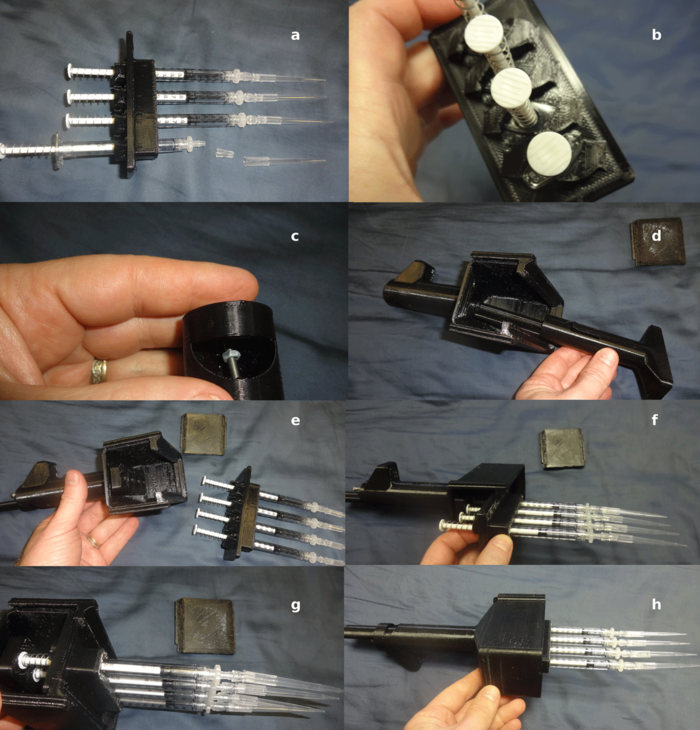
Multichannel pipettes are used widely to accelerate research and testing in life sciences laboratories and within the biomedical industry. Commercial multichannel pipettes cost several hundred to thousand U.S. dollars and are not accessible in many areas. This study utilizes an open source and digital distributed manufacturing model to design a USD$24 4-channel 200 micro-liter pipette. The design uses widely-available interchangeable off-the-shelf parts and custom components, which can be fabricated with a low-cost fused-filament RepRap-class desktop 3D printer. The manuscript describes the design, construction, and validation of an ergonomic open-source multichannel pipette, as well as the evaluation of pipetting parameters and quality control. The open source multichannel pipette is found to be compliant with ISO 8655 standards for precision and accuracy. The device has separate syringes that operate individual tips, which prevents cross contamination of specimens because there is no direct contact of different liquids with each other and no mixing with actuating air. Each syringe is easily replaced for different experiments and the source CAD files are provided to enable others to build variants or custom configurations of the open source multichannel pipette.
The assembly process of the open source multichannel pipette: a) the syringes being assembled individually with springs, tips and tip holders and being inserted into the syringe holder, b) twisting motion needed to lock syringes into syringe holder, c) M3 nut and bolt are inserted into the enclosure, d) the main plunger in inserted into the enclosure, e) enclosure is tilted up so that the sliding surface that will hold the syringe holder is exposed, f) the main plunger is pushed up into the enclosure as far as possible and the syringe holder is slid into the enclosure by depressing the syringes against the springs, g) the syringe holder is pushed to the end of the slide in the enclosure, and h) the remaining enclosure component is slid into place.
- Main design files: https://osf.io/9tn6e/
- Target group: chemistry, biochemistry, biology, biomedical, medical, and associated disciplines
- Skills required: desktop 3D printing – easy, mechanical assembly – easy
See also[edit | edit source]
- Open Source Lab
- Building research equipment with free, open-source hardware
- Open source science
- Open-source hardware
- Open-source syringe pump
- Open Source 3-D Printed Nutating Mixer
- Open Source Laboratory Sample Rotator Mixer and Shaker
- Open Source Digitally Replicable Lab-Grade Scales
- Open Source Vacuum Oven Design for Low-Temperature Drying: Performance Evaluation for Recycled PET and Biomass





